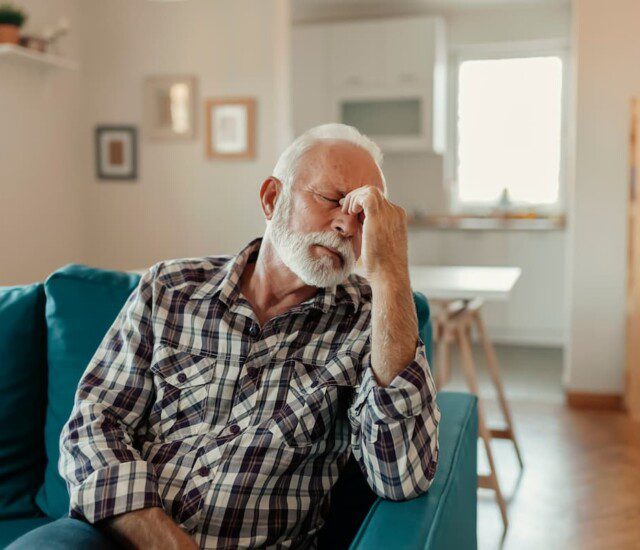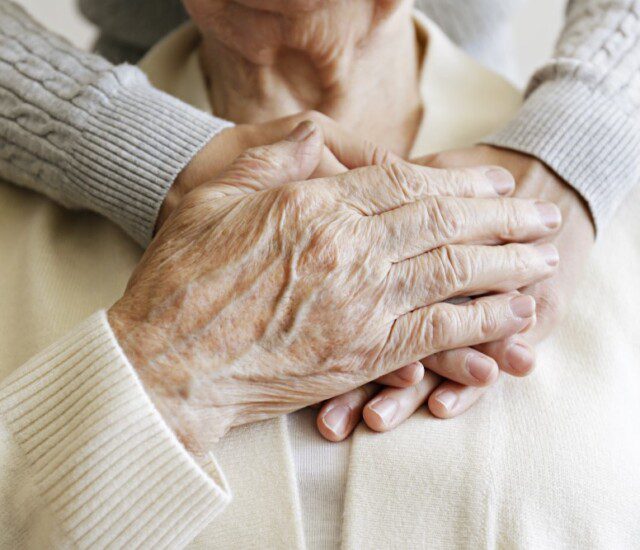How should you react if someone is having a stroke? Could you even identify the warning signs? If you hesitated when thinking about how to respond to these questions, you are not alone.
In one survey conducted by the CDC only 38 percent of respondents were aware of all major stroke symptoms and knew to call 911 when someone was having a stroke. The truth is the majority of people are sorely lacking in their knowledge of stroke risk factors and warning signs.
Before we dive into the details, it’s important to know what a stroke is.
A stroke, also referred to as a cerebrovascular accident, is a sudden interruption in the blood supply of the brain. It is a medical emergency that requires immediate treatment. The longer a stroke goes untreated, the more brain damage can occur. A stroke can also be fatal.
There are two different types of strokes: ischemic and hemorrhagic. An ischemic stroke is more common and it occurs when a blood clot blocks or plugs a blood vessel or artery in the brain. In a hemorrhagic stroke, a blood vessel in the brain breaks and bleeds into the brain.
Now that you know the basics, let’s move on to identifying some common risk factors.
Know Your Stroke Risk Factors
Some stroke risk factors are controllable and others are not. Getting educated about stroke risk factors allows you to take charge of the areas that you can control to reduce the risk of stroke.
Physical & Health Conditions
High blood pressure is the leading cause of stroke. It is a condition that occurs when your blood pressure — the force of blood flowing through your blood vessels — is consistently too high.Over time, high blood pressure weakens the arteries and can lead to medical emergencies. The good news is that high blood pressure can be controlled through lifestyle changes or medication.
Other health conditions that can lead to stroke include having a previous stroke or transient ischemic attack (mini-stroke), high cholesterol, heart disease, diabetes and sickle cell disease.
Behaviors & Lifestyle Choices
Behaviors that put you at higher risk of stroke include unhealthy diet, physical inactivity, obesity, alcohol use and tobacco use. Changing your lifestyle to include more healthy meals and exercise — in combination with reducing alcohol intake and curbing tobacco use — can help lower risk.
At Village on the Green we provide year-round wellness opportunities for our residents. We also empower our residents to maintain their independence and encourage active, healthy lifestyles.
Your Genetics Also Increase Stroke Risk
Genetic factors that put you at a higher risk of stroke include age, gender and race. The older you are the more likely you are to have a stroke. According to the CDC, the chance of having a stroke about doubles every 10 years after age 55. Though younger people can also be at risk.
Women have a higher risk of stroke than men. The CDC states that the lifetime risk of stroke for women between the ages of 55 and 75 in the United States is 1 in 5.
Women are at a higher risk of stroke for several reasons, including:
- On average, women live longer than men. Stroke risk increases with age.
- Women tend to have more incidents of high blood pressure that go untreated.
- High blood pressure risk increases during pregnancy and while using birth control.
- Women also have higher rates of depression, which is another risk factor for stroke.
Race or ethnicity can also put you at a higher risk of stroke. According to the CDC, “Blacks, Hispanics, American Indians and Alaska Natives” may be more at risk of having a stroke.
This is likely due to a mixture of factors from societal to medical.
Learn the 5 Warning Signs of Stroke
The five common warning signs of stroke, as outlined by the CDC, include:
- Sudden numbness or weakness in the face, arm or leg, especially on one side of the body.
- Sudden confusion, trouble speaking, or difficulty understanding speech.
- Sudden trouble seeing in one or both eyes.
- Sudden trouble walking, dizziness, loss of balance or lack of coordination.
- Sudden severe headache with no known cause.
Call 911 right away if you or a loved one has any of these symptoms. The sooner you can get someone to the hospital after a stroke occurrence the better. Every minute counts and fast response can help prevent more serious brain damage, disability or death.
Memorize the FAST Acronym
The FAST acronym was created in 1998 to educate the public on detecting the symptoms of a stroke. The American Heart Association breaks down the acronym as follows.
F — Face Drooping
Does one side of the face droop or is it numb? Ask the person to smile. Is the person’s smile uneven or lopsided?
A — Arm Weakness
Is one arm weak or numb? Ask the person to raise both arms. Does one arm drift downward?
S — Speech Difficulty
Is speech slurred? Is the person unable to speak or hard to understand? Ask the person to repeat a simple sentence.
T — Time to Call 911
If the person shows any of these symptoms, even if the symptoms go away, call 911 and get them to the hospital immediately.
What To Do in the Instance of Stroke
A stroke can occur seemingly from out of nowhere. Acting fast can help stroke patients get the treatment they need. The best way to respond to someone having a stroke is by immediately dialing 911. It’s better to be safe than sorry when dealing with a possible stroke occurrence.
Knowing how to spot the risks and warning signs of stroke can help save lives.
If you or someone you love has suffered a stroke, you can count on Village on the Green to provide the full suite of health services, including our Medicare-certified rehabilitation services.


